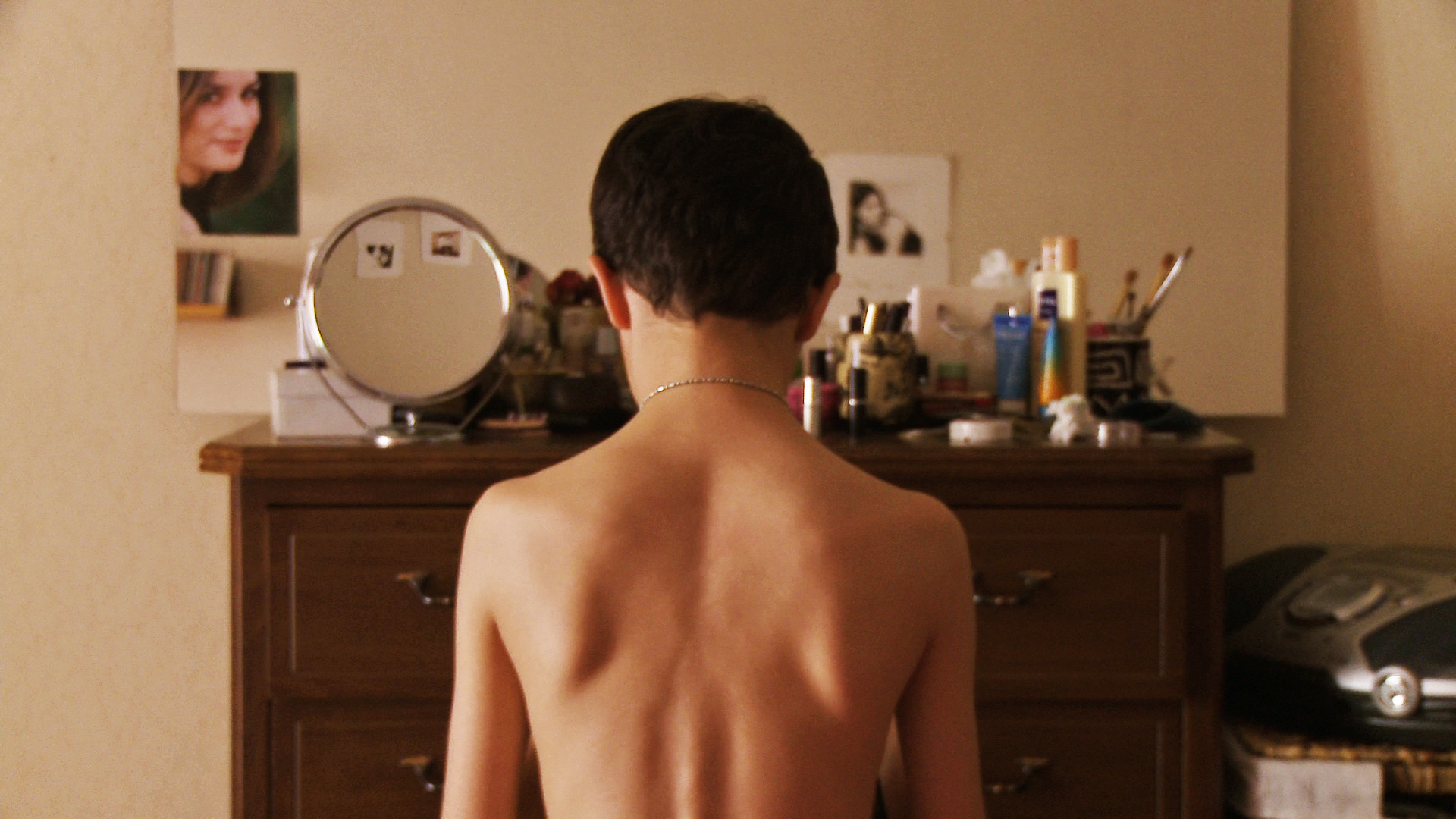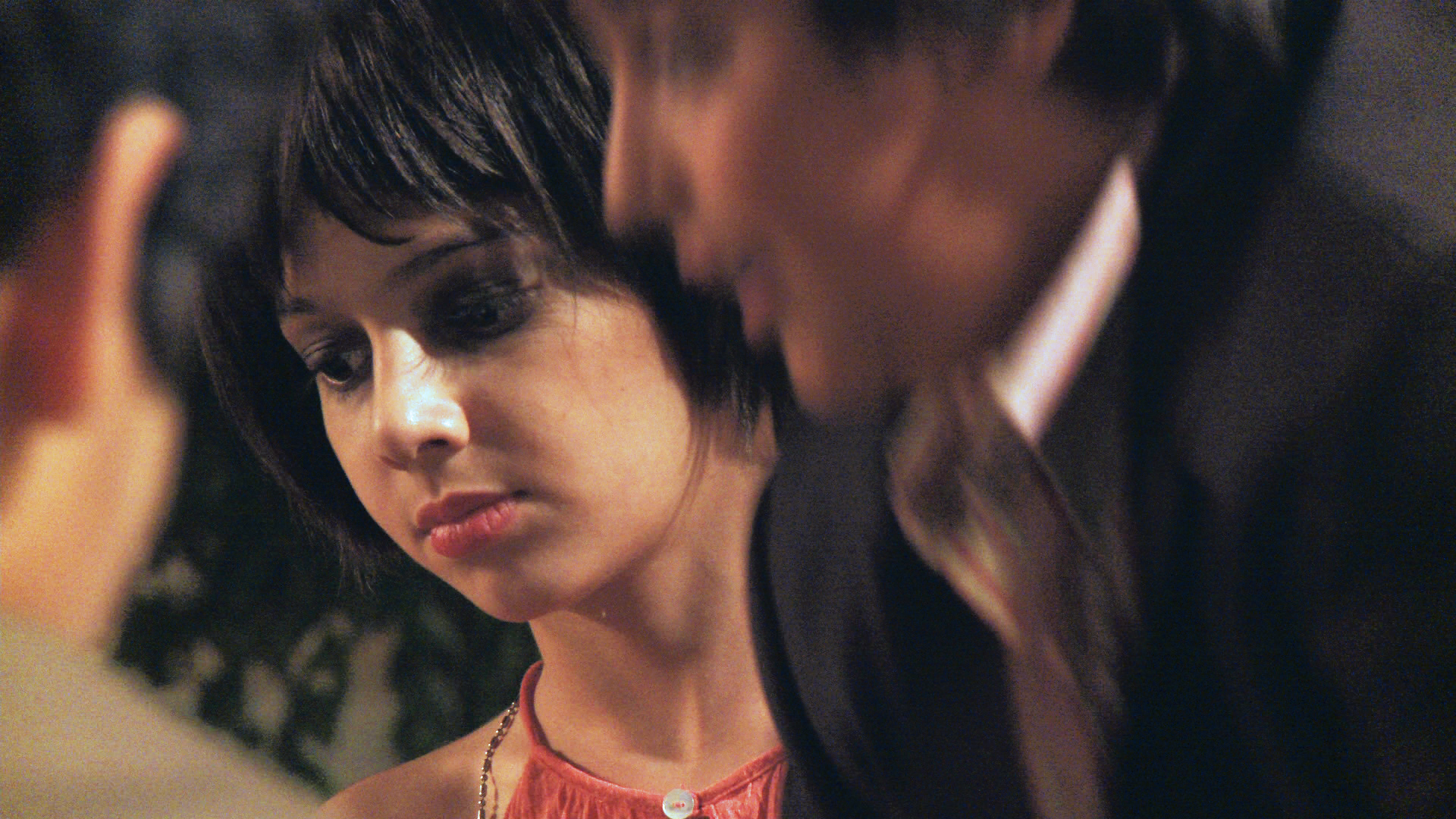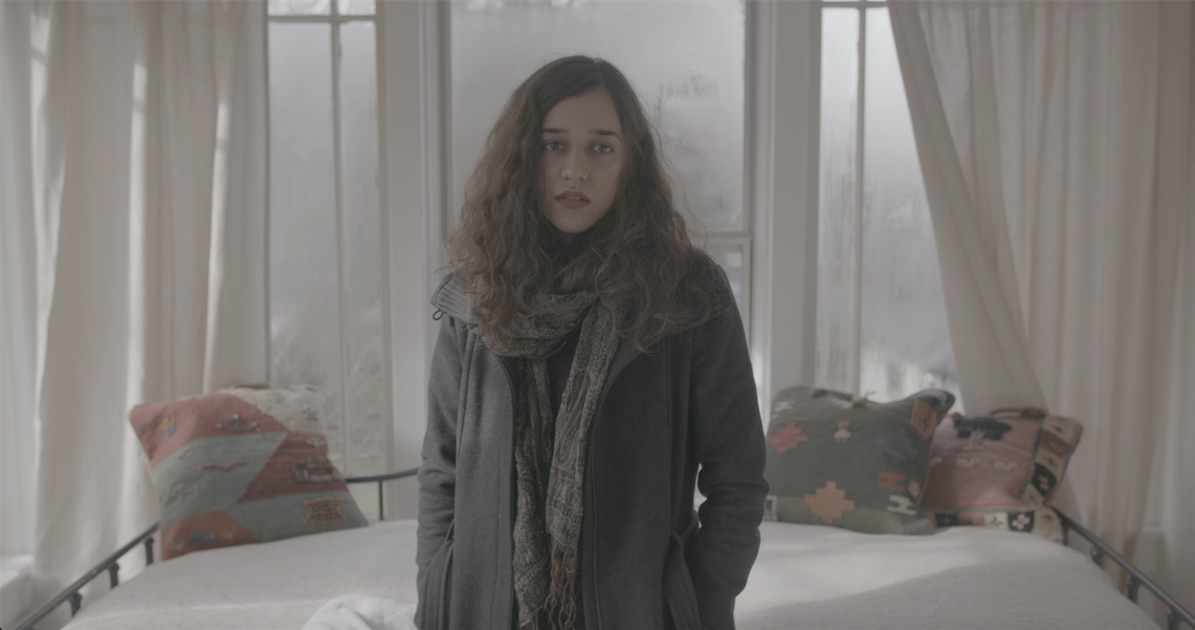
There’s something enticingly beautiful about watching a pivotal childhood milestone through the eyes of another’s craft. Anahita Ghazvinizadeh’s award-winning Needle does just that, drawing in viewers through her strong emphasis on relationships, family dynamics, and the role that almost mundane daily objects can play in portraying a story.
I planned to only watch Needle, to focus my attention on the critically acclaimed work that the film world was raving about. Yet, twenty-one minutes later, I couldn’t stop myself from uncovering the familiar realism that pervaded Anahita’s other works. There’s a playful, childlike whimsy woven throughout her films that simultaneously undercuts yet enhances the gravity of the societal dynamics she explores.
For those of you who haven’t had a chance yet, you can watch her short film collection here: NEEDLE – WHEN THE KID WAS A KID
I had the pleasure to sit down with Anahita, a vivacious yet calm spirit, who is eagerly gearing up to tell woven tales of childhood-adulthood transitions. I witnessed her as a person, an artist, and as a storyteller. Anahita herself if outspoken but not brazen, opinionated but soft, whimsical and playful, open-minded and open-hearted. Our conversation was filled with laughter, with relating experiences, and with tangential stories (such as where we each got our ears pierced!) that all found their way back to her passions.
Born and raised in Tehran to a strong family of female empowerment, Anahita graciously made her way to filmmaking by navigating the depths of the Tehran arts scene. In high school, she immersed herself in theatrics, taking acting classes at Tehran University while testing her hand at playwriting. Thinking she was set on this path, she ranked first out of thousands of test takers in the arts, and on a whim, took a cinema class during her first semester. It was there where she met the cast of characters who would lead her to Abbas Kiarostami’s year-long filmmaking workshops in Lavasan. Assignment after assignment, she fell in love with the intricacies of filmmaking, perfecting her writing skills through plays and scripts, and directing her first set of short films. Her career began in Tehran, but launched international while she was at the School of Art Institute of Chicago, where she completed her MFA and produced Needle.
Anahita, you’ve mentioned that your filmmaking community in Tehran was very male dominated. What can you tell me about that? How did your experience vary as a female filmmaker?
When I was at the high school it was a gender-separated environment. But still there were intricate layers in conception of gender identity that happened for me both at the school and at home. I have an older sister, and the dynamics between us, and our parents always had interesting reversals in gender roles. My mom was sometimes more like a father figure. My mom was known to be our father; she had this loud voice and never wore conventionally feminine clothing. I was used to seeing woman that looked pretty masculine in many ways. Whereas my dad – well, he was very into cooking and saying the type of kind words that someone would typically expect to hear from a mom. I grew up in a heteronormative family, but the way my family was playful and critical of gender roles raised me without the idea that there would be any trouble for me in society because I’m a woman. It only occurred to me that there was a difference in opportunities much later in life — and even the, the forms of discrimination were subtle and close to what I would see in any country.
I was also privileged to work with such a group that was intellectual and liberal about everything. When it got to serious work matter, the differences were not in gender, but in age — I was very young and new to filmmaking. I didn’t have an image in mind of going to the West for more opportunity. I’ve always wanted to come back to Iran.
Our readers at TTT range from individuals who’ve lived their entire lives in Iran, to those who’ve never had a chance to visit, yet feel very culturally connected. Tell me, then, how would you describe Iran in your own words?
To me, Tehran feels like the most real place I’ve ever been in. I feel like there is more intensity and reality there for me than in any place I’ve experienced in the US (I’ve lived in Chicago and in Houston). That could be because I was born and raised there. I believe intense life experiences give more reality to life. Here [in the US] I feel like I’m walking a little bit above the ground. In Iran everything is outward, everything is exposed, much more of emotional up and downs. In the US, it’s very different. More buttoned upon.
I think I’d describe Iran as being intense, but alive. I’m very glad that I left Iran to experience a different form of life – it’s an isolated place, without a great notion of racial diversity. Even in my filmmaking practice, it was a new strange for me to work with people who speak in my second language. To experience this new form of communication is incredibly valuable.
That’s an interesting observation – you’re producing films in your second language. All of your actors in Needle are American, and it seems as if you are exploring a coming-of-age story in a Western environment. Was this always the plan? Where did the idea of piece come from?
It was semi-autobiographical. I was trying to make an adaptation of what was happening in Iran, in a different culture and background, to what was happening in the US. I should say I was making Needle at a time when I didn’t have a clear sense at all of what it its like being a white middle class American, which is the people who are represented in this film. So it ended up being a very intuitive choice of actors. I actually asked some of them to help me rewrite the dialogue, though I wasn’t trying to be true to the nature of life in the US, but rather true to my own personal experience as to what happened in my own childhood.
I never got my ears pierced as a child. I did it at age 21 or 22. Between my parents, there was always this discussion between them as whether or not I should pierce them – my mom said it was girly and unnecessary and could cause infection. My dad was a pharmacist, and in Iran they do ear piercings at the drug store. I could have easily gotten it down at his drugstore, or even have him use the needle at home, yet there was always something that would postpone my piercing. If we made arrangements, they somehow got cancelled. So this story was always stuck in my head and I felt like through this film, I could dramatize the experience and see how the cancellation and postponing of an event would play out in the context of family quarrels. The way the piercing ends up taking place reflects a coming of age for our main character, exploring all of these contexts for this young girl.
In Needle, you focus quite a lot on daily objects – what role do these objects play in telling the whole story?
I would say that I was using them as metaphors. There was some ambiguity to their use in the story; I can’t directly tie them to one concept of the film, but I felt like visually they resonated to some of the ideas of the film — like the gum that girl was chewing. We see her playing with the gum, sticking it on the window – close-up shots of those interactions.
First of all, the decision to use gum as a medium was based on personal experience. I used to play with my gum and mom would tell me that I shouldn’t take the gum out of my mouth and put it back in. It was like she was trying to protect me from the dirt — or whatever could be considered dirty — but at the same time, I was trying to rebel so I would stick this gum to different surfaces. It was like a mini rebellion against the control of a parent. And then there’s the visual part of the gum — it’s formless, shapeless like an amorphous period of your life.This film Needle, The short film I made before it in Iran When the kid was a kid, and a short film I made after that in Texas The Baron are all about years of pre-adolescence, the formless time when you’re transitioning between childhood and adulthood. That’s not conveyed in a direct way in the film, so the visual of the gum represents the general transition that is happening to our main character. There is also this feeling of touch and hands — two things that I like to explore in cinema, after being inspired by the work of French filmmaker Robert Breson. He likes to convey touch in a medium that’s not touch-based. The gum also gives us a way to get close to the main character. It’s still a little hard for me to find reasons to have really close shots of a person. Sometimes, through the mediation of an object, it gives us reason to get closer to the character.
You won the first place prize at the Cinefondation short film competition at the Cannes Film Festival for Needle. Can you describe what it was like seeing your film up on the big screen and the emotions you experienced throughout the Festival?
It was just… the first days, the days leading up to the last day, were really stressful. It was a huge festival with a lot of feature films and superstars. I was told that no one would be paying attention to the shorts. “Don’t be disappointed if the film is empty,” I was told, “It’s mostly about the bigger projects and films.” Despite that warning though, the space was really big and packed; compared to other festivals I had been to it was really different. The jury watches at the same time as the audience and that was really stressful. They were sitting in the middle, a few rows behind us, and I could just feel them looking on the back of my head. There is so much competition in the air. Everyone was there trying to get something with their future there.
I honestly didn’t expect to win. All the people who were there looked much more professional and prepared than us. We came with horrible posters and cards. One group even had a giant billboard. It was my first time at an A festival with so much going on. Until the last night I couldn’t even party, I felt weird and isolated, I was nervous. I remember the night before we heard the result, I went to bed at 9 or 10, which I never do. On the day of, it was weird feeling because they announced the third, second, and finally first place. After hearing the second prize winner, we knew we weren’t going to get it, so then we were so shocked and overjoyed when we won. There were just those last few hours of the Festival that I finally felt so relieved and of course it was a happy ending for us.
That’s an incredible achievement! And I know you’ll be back at Cannes soon, so I can’t wait to hear about the stories. So what’s next for you? When can we expect to see your work on the big screen again?
I’m rewriting the script for my first feature film, getting ready to take it to production. One of the nice things about my prize at Cannes is that they’re providing me with a platform for distributing and debuting my first feature film. It’s stressful because there’s a lot of expectation now, but it’s exciting.
This film is still about family dynamics and the main character again is a teenager, exploring questions around the many aspects that form their identity, including their gender and their age. The dynamics play out in a sibling relationship, exploring ideas of role-play and family roles. It’s almost theatrical in a sense
I also just finished another short film, What Remains. In that film, I worked for the first time with both Iranian and American characters. I think I’ll be doing the same for my feature film. I think something about being an Iranian here, and what I’ve learned over my time here, will be injected into the story as well. In terms of the screenwriting and the language, it’s very interesting to be mixed. My point of view is still much more Iranian and not American – it’s really reflective of how people like me talk and communicate and experience here.
Well, I certainly can’t wait to see it. Before we part ways — This is something fun I like to do with everyone I speak with. I call them 10 second answers. Ready? What’s your…
Favorite type of music? Rock and pop music, as well as traditional Iranian
Favorite place to think? The bathroom!
Where do you with to visit next? St. Petersburg, Russia because I’m influenced by my favorite author, Nicolai Gogol. Also, parts of Buenos Aires, Argentina because I love a lot of writers and filmmakers based out of there.
Favorite film? In general I could name filmmakers that are important for me like Bresson, Pasolini, Fassbinder, Kiarostami, Claude Chabrol, Claire Denis, Maurice Pialat, Agnes Varda, Michael Haneke, Aki Kaurismaki, Jerry Lewis!, Mel brooks, Robert Altman, John Cassavetes, Tsai Ming Liang, Apichatpong Weerasethakul, Roberto Monervini, Lucrecia Martel, Ursula Meier and others that I follow their works! My favorite film really varies month to month. This month it was Cecil B. Demented by John Waters which was super fun to watch!”
Favorite snack food? Raw Honey!
What do you miss the most about being home? Enghelab Street. I’ve never seen anywhere else in the world – a main city street filled with dozens of book stores. So many underground booksellers and amazing cafes.
What are some Instagram accounts you follow? My friends!
To know more about Anahita Ghazvinizadeh and her projects: www.anahita.mixform.com
 |
Misha Nasrollahzadeh
Contributor
Misha is a product manager for a healthcare technology company, based in San Francisco. You can follow her at @mishanasro. |






